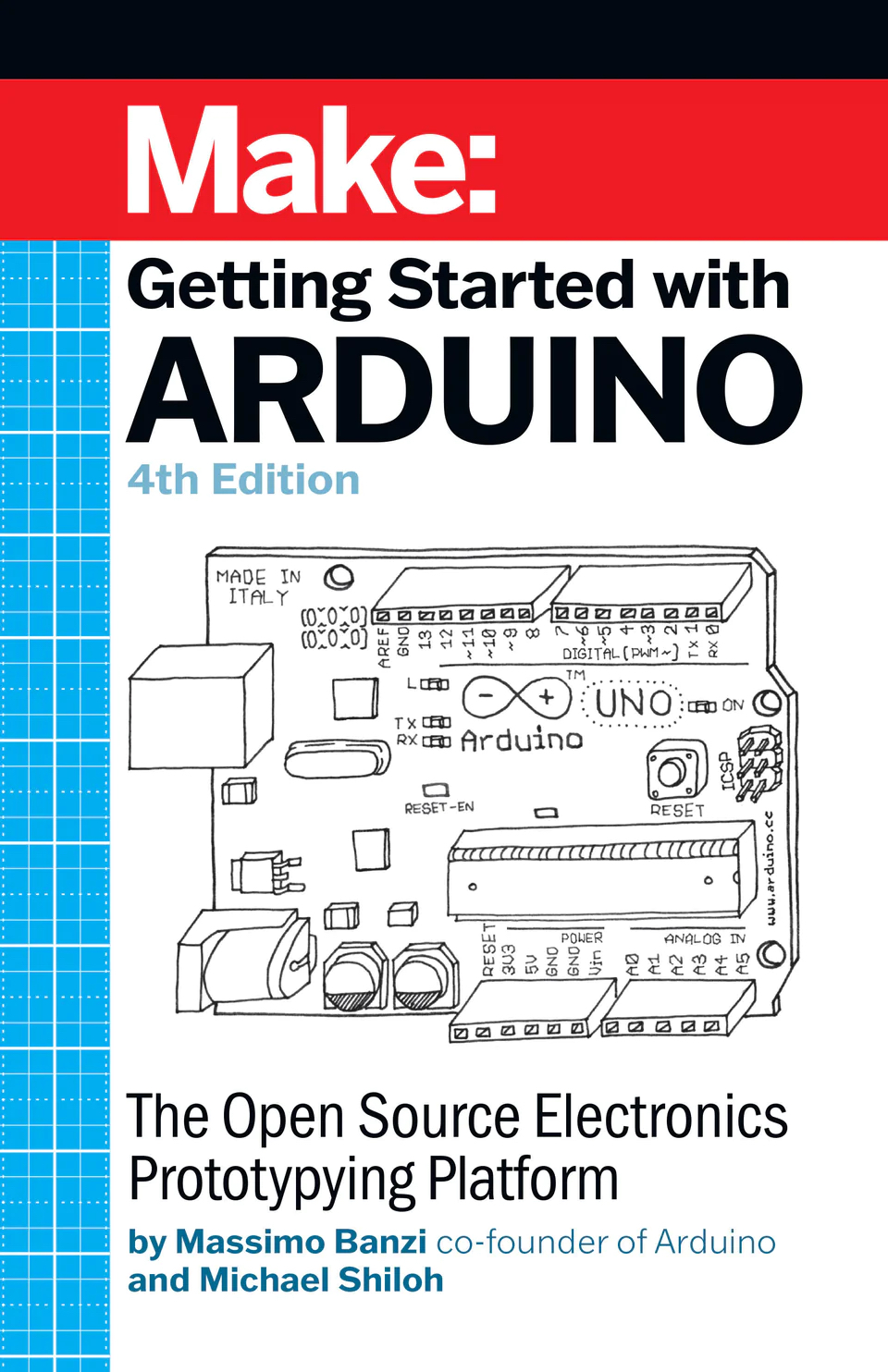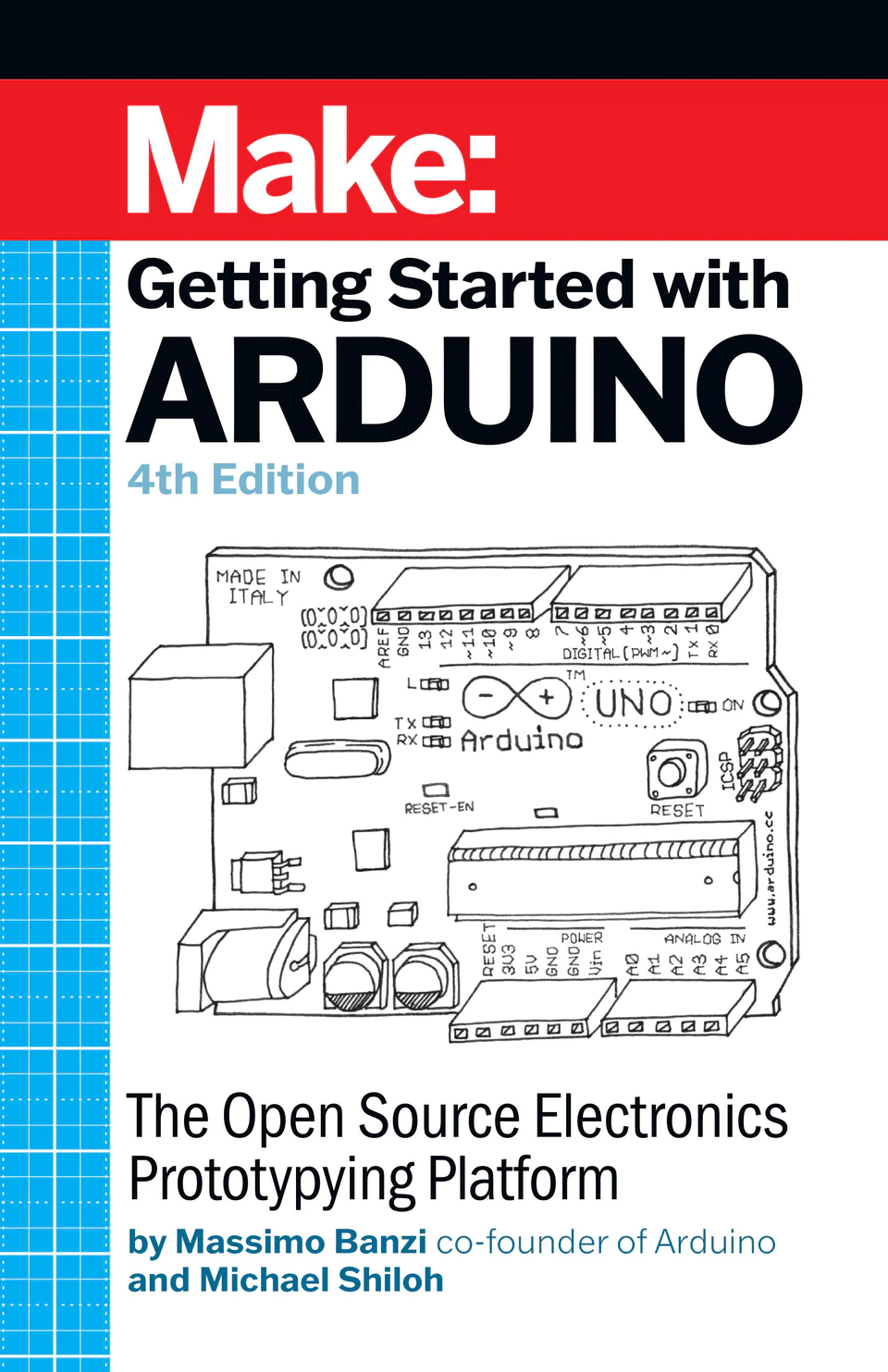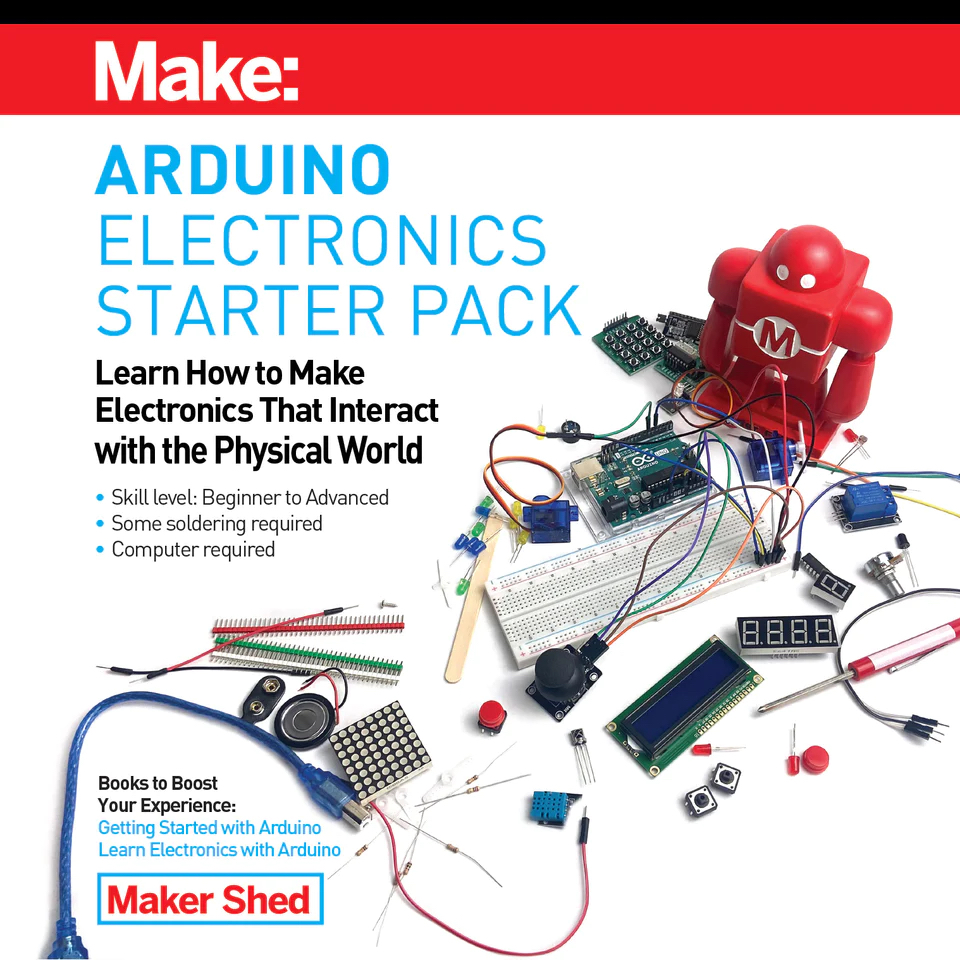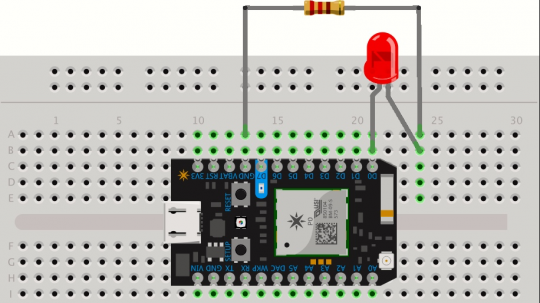It's the "hello world" of physical computing: blinking an LED.
It's making the connection, seeing if it works.
Your first experience blinking an LED was Getting Started with the Arduino: the book and the kit.

You begin with the book, reading the basic theory behind physical computing. Then you switch over to an actual, real life Arduino board, which you had ordered.
You follow the instructions, plug in a few things, copy some code, and -- yes -- make the LED on the Arduino board blink according to a pattern you chose.
It's rudimentary, but it brings together physical and digital computing in a vivid way.
Directing electrons around a small plate of fiberglass and epoxy, making them do what you want them to do -- that's exciting and illuminating in a quiet way: an epiphany that requires only a laptop computer, a few electronic parts, and a book held open with a jar of honey (this is all taking place on your kitchen table).
That's one reason why Arduinos are so popular. They unpack what has traditionally been tightly jammed together into circuit boards, unlabelled and unexplained.
Take the cover off a cheap electronic gadget, and there's a circuit board in there, alright, but what the hell's going on with it? How does it work?
The creator has no interest in telling you. In fact, there are plenty of reasons not to explain it. Starting with: Why help competitors copy it?
The non-profit, open source Arduino is different: everything is explained, to just about whatever level you want to drill down to.
That's why it's so rewarding, intellectually, to monkey with an open source electronic circuit board: to take it apart, physically and mentally -- even if you only do it a few times before you stash the whole project away in a drawer forever.
This combo -- Arduino book and kit -- are enthusiastically recommended as an introduction to what can happen when you combine computing power and physical objects.
Here's the book in the Maker Shed.

https://www.makershed.com/products/make-getting-started-with-arduino-4th-edition-print
And here's the Arduino kit in the Maker Shed

https://www.makershed.com/products/make-arduino-electronics-starter-pack
A similar payoff is available via the Particle Photon: when you buy a basic kit, and work through Particle's simple Blink an LED instructions.
Except that it launches the experience into a global, internet-connected grid.
